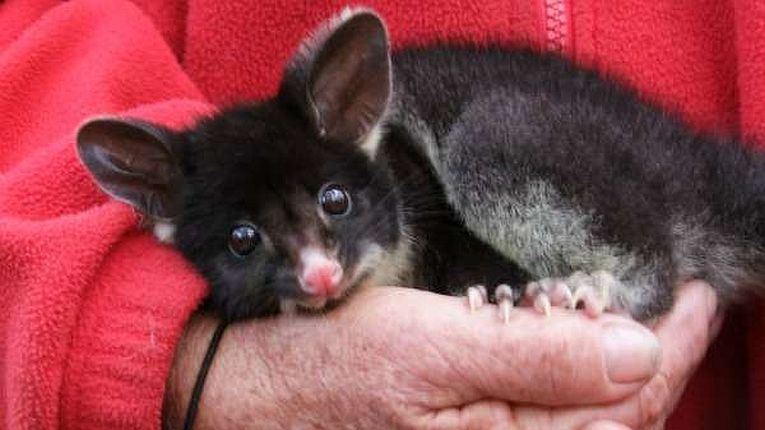Bushin the region are more and more fragmented.Koomal image; Credit: © Dr. Sean Molloy
While we were looking at some small mammals on Facebook, it seemed unfortunate that the many small marsupials weren't mentioned. So many of them are in danger, often because of invasive placental mammals. The koomal (a small Australian possum called Trichosurus vulpecula hypoleucus, although the other subspecies differ a lot) is only found in the SW forests at the tip of Western Australia, well separated from the other populations of this species
These forests are extremely biodiverse, with these endangered phalangerids naturally of great interest. Where else? Radio collars have been used for 12 months to follow the Margaret River colonies, where lack of tree cover makes them even more vulnerable to cats and foxes. The results of this research and anticipated changes due to future climate change in Australia (to 2070) are published in a paper in the journal PLOS ONE.
The authors are Shaun W. Molloy (the photographer here), Robert A. Davis and Eddie J. B. van Etten of Edith Cowan University in Joondalup. The animal is quite common in Eastern Australia as another species and even more common in New Zealand where it is a successful invader, originally imported for a failed fur industry. There, only cats predate it, whereas in Australia ,there is a vast range of enemies, including tiger quolls, dogs, foxes, cats, goannas, carpet snakes and owls! Here in the wild west, extinction looms however, for this smaller, thick-furred and omnivorous version of the species.
Sean Molloy has mentioned the lack of habitat as the dense jarrah forest in the area declines. Other Jarrah inhabitants will also decline, potentially to extinction, unless management structures are now put into place to conserve the high rainfall areas needed for survival. Australia seems to suffer more than most as the dreaded global warming drives climates to extremes. Wild fires would be critical here of course, just as US and European fires have concerned conservationists as to whether recovery will be a possibility.
SDMs are Species Distribution Models, using bioclimatic envelopes,
designed to investigate how climate change scenarios could affect habitat. With Phytophthera fungal infestations destroying both overstorey and understorey plants and warming temperatures, perhaps the south of Australia has limited options. Perhaps the only way forward is to anticipate the changes through this kind of modelling. If detailed information is fed into the modelling, potential distributions can be extracted for a species such as the koomal. In this case the authors believe 2 populations will initially split, and the distant forecast is even more negative. Detailed fieldwork is required to gain this understanding, especially at this finely detailed level, where climatic variables are of less significance than fragmentation or demographic movements.
The significance of this paper goes beyond simply one Australian species. We cover some of these possum problems
in an article that includes a once-extinct sugar glider relative! The techniques involved in this research can easily be transferred to other problems on every continent, with the lessons learnt from applying fine detail to an SDM. For most of us, it means we can rely much more on such forecasts, just as we have to cope with rising sea-levels and organisms that no longer live where we expect.










